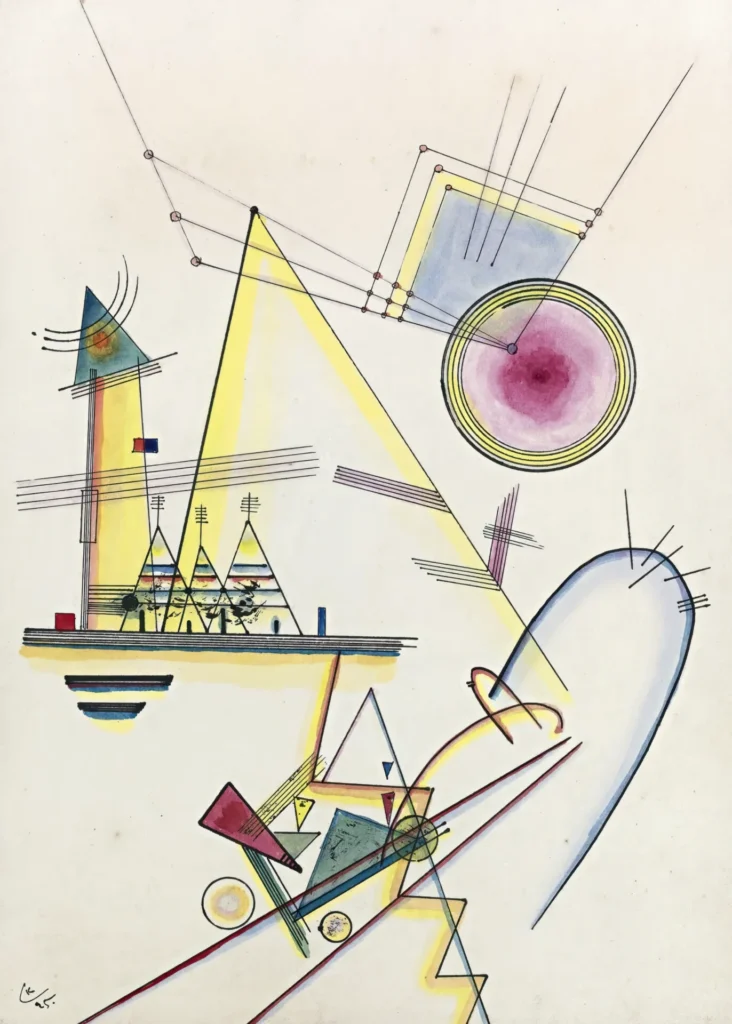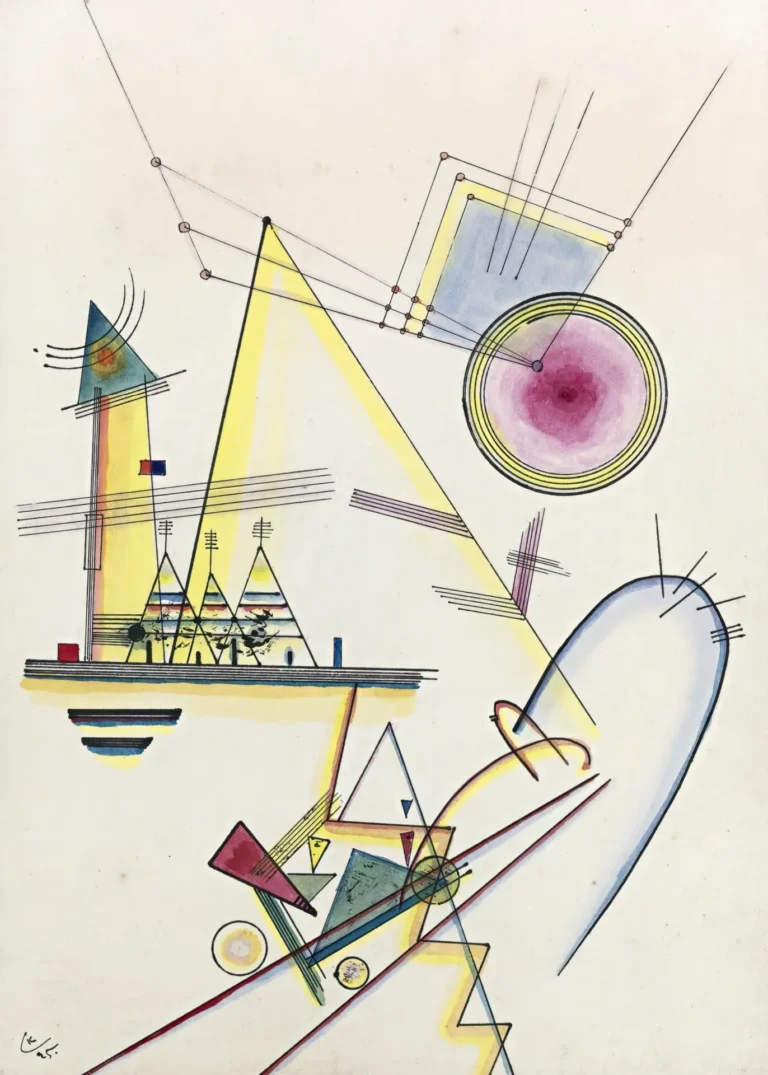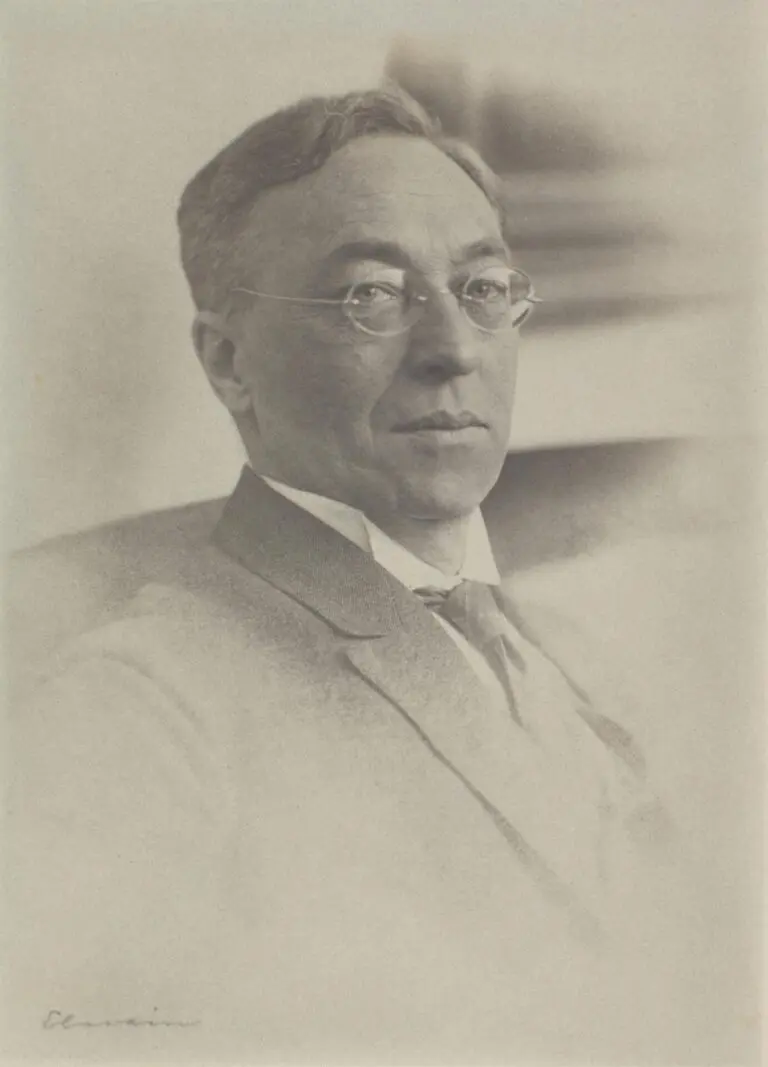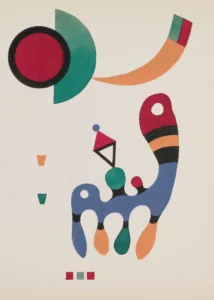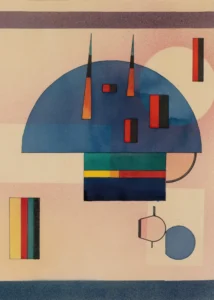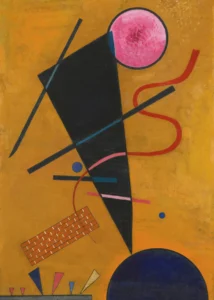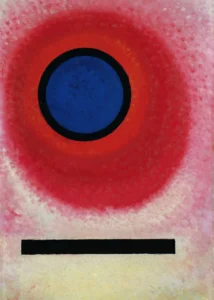Delicate Soul (1925)
Created in 1925, Wassily Kandinsky's 'Zartes Gemüt (Delicate Soul)' is a stunning example of abstract art that embodies the emotional depth and spiritual resonance found in colors and forms. This composition features an array of geometric shapes rendered in a vivid palette of yellow, blue, red, and pink. Throughout his career, Kandinsky sought to express the intangible connections between color and emotion, making this artwork a prime representation of his theories. As a product of his time at the Bauhaus, it signifies a pivotal period of artistic experimentation.
1925
About the Artwork
Wassily Kandinsky, often heralded as the father of abstract art, created 'Zartes Gemüt (Delicate Soul)' during his years at the Bauhaus, a hub for groundbreaking artistic thought and practice. Born in 1866 in Moscow, Kandinsky shifted from a career in law to embrace the world of art after turning 30. His exposure to diverse influences and his deep engagement with the spiritual dimensions of color shaped his artistic philosophy. In this particular piece, Kandinsky explores the harmony between form and color, aiming to evoke emotional responses from the viewer. This artwork not only exemplifies his unique aesthetic vision but also aligns with his desire to communicate the profound experiences of the human soul. Over the years, this painting has garnered attention for its vibrant visuals and the ethos of abstraction that modern art would come to embrace.
Did You Know
Wassily Kandinsky believed that colors could elicit emotions similar to music. He often sought to merge visual and auditory experiences in his works, suggesting a synesthetic approach to art.
In his essay ‘Concerning the Spiritual in Art,’ Kandinsky outlined his beliefs about color and its ability to communicate deeper spiritual truths, positioning art as a means of transcending the material world.
The Bauhaus school, where Kandinsky taught, was pivotal in forming modern art and design. His experiences and exchanges with fellow artists there significantly shaped the evolution of abstract art.




